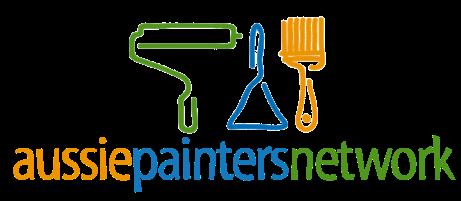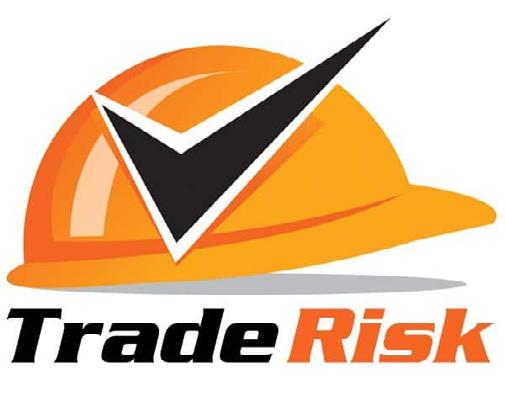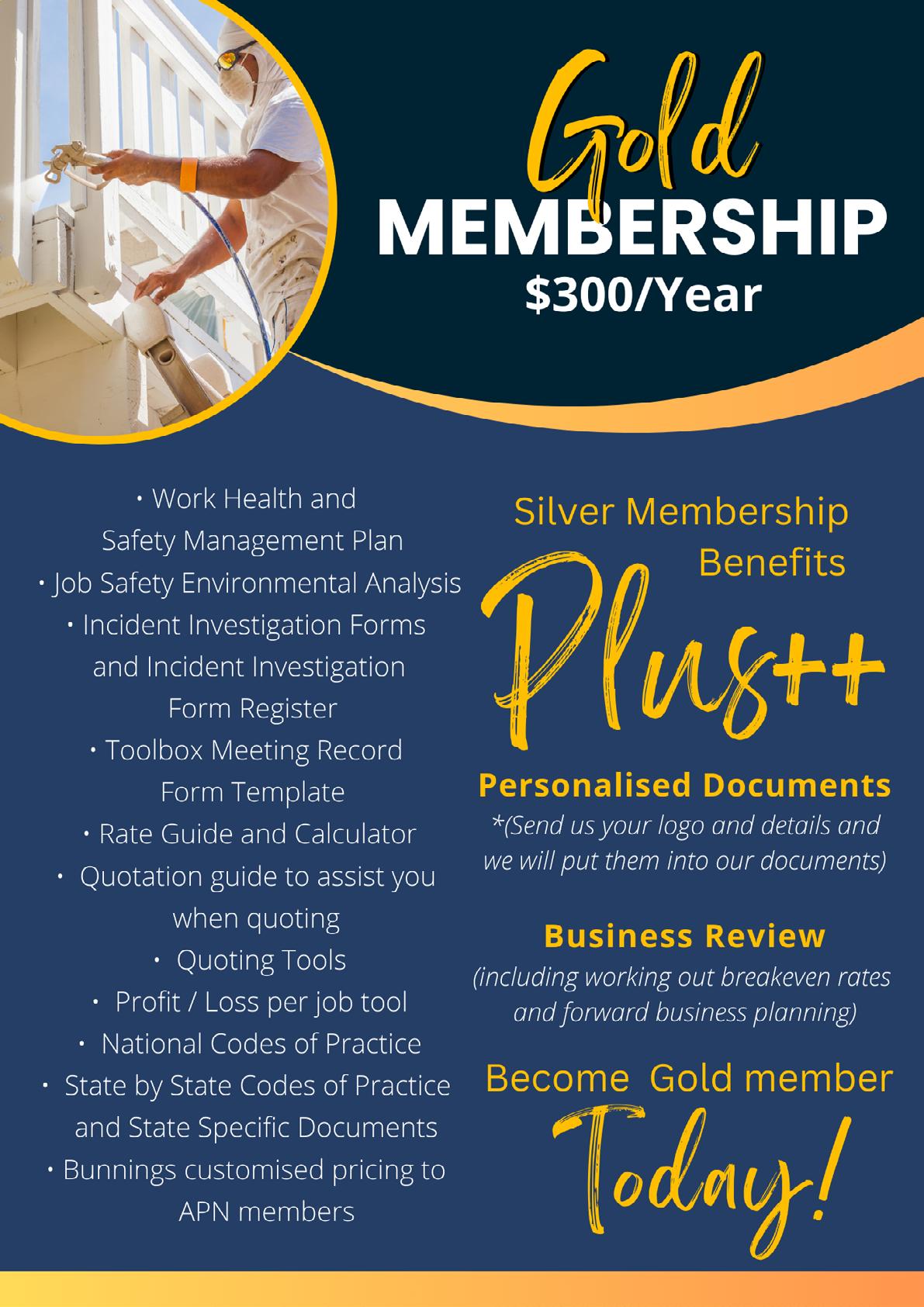The Importance of Training (Part 2)
With every student that I train, they are aware of the importance of this unit..
Turn Struggle into Creativity
This requires a growth mindset...
Combat interest rate rises in three easy ways!
Ensuring Your Business Gets Paid:
How a Commercial Law Firm Can Help?
www.aussiepaintersnetwork.com.au




From the Editor
Hey Everyone,
Welcome to the 126th edition of the Aussie Painting Contractor Magazine.
This month has been one of the busiest months for Aussie Painters Network and myself. From travelling up and down the Qld Coast seeing painters and apprentices, see my article “Life as a Painting Trainer” to see everything I’ve been up to.
I have been contacted by a couple of people regarding training organisations ticking and flicking people that shouldn’t be in our trade. This is both apprentices and RPL candidates. I keep hearing from painters all over the country that the quality of our trades people is on the decline. Well this is why.
If you DO NOT TRAIN your staff and apprentices correctly, you will always have substandard trades people working for you. I have had an employer tell me that “I have one good apprentice that I want to get trained properly however, the other two aren’t much chop so I’m just getting them ticked and flicked onsite”. As I explained to the employer, DO NOT come and complain to me about the quality of the industry if that’s what you are going to do.
All I can say is, check who is doing your training and ask them for their qualifications.
CONTRIBUTORS
• Helen Kay
• Jim Baker
• Leo Babauta
• Marc Cheong
• Marilyn McMahon
• Mary Cairns
• Nigel Gorman
• Robert Bauman
• Sandra Price
EDITOR
Nigel Gorman
GRAPHIC DESIGNER
J. Anne Delgado
Nigel Gorman

nigel@aussiepaintersnetwork.com.au
07 3555 8010
'Til next month, Happy Painting!!














Advertise with us... 1800 355 344 07 3555 8010 info@aussiepaintersnetwork.com.au www.aussiepaintingcontractor.com
Contents
06 09 12 14 18
The Importance of Training (Part 2)
HR Legislation Changes
Are your Employment Contracts up to date?
DON’T DIY Your Business Insurance
Feed me: 4 ways to take control of social media algorithms and get the content you actually want

Combat interest rate rises in three easy ways
Turn Struggle into Creativity
Life as a Painting Trainer! (Part 2)
26 29 30 34 36 40 41
22 20
The Big Questions You Need to Ask in Life and Business

Performance Reviews
Ensuring Your Business Gets Paid: How a Commercial Law Firm Can Help
Why Reconciliations keep your Business on Track
Higher unemployment and less income: HOW DOMESTIC VIOLENCE COSTS WOMEN FINANCIALLY
Industry Idiots
Important Contacts
Opinions and viewpoints expressed in the Aussie Painting Contractor Magazine do not necessarily represent those of the editor, staff or publisher or any Aussie Painters Network’s staff or related parties. The publisher, Aussie Painters Network and Aussie Painting Contractor Magazine personnel are not liable for any mistake, misprint or omission. Information contained in the Aussie Painting Contractor Magazine is intended to inform and illustrate and should not be taken as financial, legal or accounting advice. You should seek professional advice before making business related decisions. We are not liable for any losses you May incur directly or indirectly as a result of reading Aussie Painting Contractor Magazine. Reproduction of any material or contents of the magazine without written permission from the publisher is strictly prohibited.
The Importance of Training (Part 2)
In last month's edition of The Aussie Painting Contractor Magazine , I covered the first 3 Units of the 12-part Series that I have written.
This month, I’m covering what I believe is the most important unit of all, Apply WHS requirements, policies and procedures in the construction industry.
This is the one unit that assists in everyone going home safely at the end of the day. It also covers what everyone’s requirements are within the construction industry and who is responsible for what.

With every student that I train, they are aware of the importance of this unit. They all know that it is imperative that your Personal Protective Equipment PPE is paramount to the longevity of your life.
I ask every student "do you wear a mask when you are sanding?" Less than 50% of students do when they first start in the classes. It’s incredible to see and hear how low on the priorities spectrum that PPE is for many in our industry.
As I emphasise to all students, "have you heard of asbestos or lead paint? What about silicosis?"
Generally, most have heard of them, which is great, however, they don’t think that it's ever going to affect them or the people around them.
As I always explain, “did you know that lead and asbestos were the best things in the construction industry in their day? What is in the plaster and paint that you are sanding now?” That tends to open a few eyes and make them think about their personal health in the future. I have even had students tell me “The boss said just get it done quickly and it will be ok!” I should mention this was regarding a lead paint job.
Well, sorry NO!! It is not ok in any way shape or form.
As I said at the start of the article, it’s about everyone’s safety and if there is any risk to be taken it just shouldn’t be at the end of the day.
6 | Aussie Painting Contractor
Training isn’t just doing the theory and ticking boxes, it's about sharing life experience and the right way to do things; and ensuring that what has happened in the past when cutting corners to get the job done without the protection of people in the industry and the public,


in fact everyone, doesn't happen again!
One thing that I have learnt throughout my 30+ years in the industry, is that if you are going to do a job, do it safely and charge the client for the work you do. It’s like training; if you want your staff to do the best possible job they can, then have them trained the right way. Don’t try and save on training by cutting corners and getting the good old onsite 'tick and flick' happening. Get your staff and apprentices trained properly in all aspects of the industry.


It’s great having all the equipment to conduct the training required, I hear all too often that trainers just turn up with paperwork to fill in and WOW, you have finished a unit, or even better, "the trainer just got me to hold a roller or spray gun hand piece and pretend I’m using them and take took a photo.
Well, If you want to get the best training for your apprentices available, reach out and contact me.
Nigel Gorman nigel@aussiepaintersnetwork.com.au 07 3555 8010
2023 May Issue | 7

HR Legislation Changes

Are your Employment Contracts up to date?

With a continually changing workforce and so many factors competing for employers’ attention, it’s critically important that you keep abreast of changes in the Fair Work Legislation (employment and industrial relations reforms), to ensure you are minimising your litigation risk. Knowing that you have everything covered in your employment contracts is a great way to protect your business.
The Fair Work Legislation Amendment (Secure Jobs, Better Pay) Act 2022 (Cth) was enacted in December 2022, resulting in a number of changes that will be introduced throughout this year. Some key changes made in the Fair Work Act 2009 (Cth) include:
Confidentiality and Pay Secrecy – Pay secrecy clauses are now illegal in Australia and any employment contract entered into or changed after 7 December
2022 must not include a clause that prohibits employees from discussing their salary and remuneration. Effective since December 2022.
Positive Duty to Eliminate Sexual Harassment –
Employers can be held liable for sexual harassment in the workplace unless they can demonstrate they have policies in place and have taken reasonable steps to prevent it. Effective since November 2022.
Anti-Discrimination Protections – Additional anti-discrimination measures have been introduced and all workplace participants need to be educated about the new protected attributes including breastfeeding, gender identity and intersex status. Effective since December 2022.
2023 May Issue | 9
Flexible Work Arrangements – Employers will soon have new obligations when an employee requests a flexible work arrangement (see our February Newsletter) and employees have more legal recourse if their request is denied. Effective as of June 2023.
Paid Family and Domestic Violence Leave – All employees can access 10 days of paid leave in a 12-month period. Effective February 2023 for employers with 15 or more employees and 1 August 2023 for employers with less than 15 employees.
Public Holidays – Employees need to be requested to work public holidays and may refuse on reasonable grounds. If they work the public holiday, they must be compensated accordingly e.g. given a mutually agreed day off in lieu. See our April Newsletter for more information. Effective March 2023.
Shut Down – Employers covered by certain awards will be required to give employees affected by a temporary shutdown (such as a closures over Christmas/ New Year), 28 days’ written notice of the shutdown, if the employer will require employees to take paid annual leave during that period. If an employee doesn’t have enough annual leave accrued for the closure, employers and employees may mutually agree to an alternative such as leave without pay, annual leave in advance or using accrued time off. To see if you are affected by this change, check for your award on this list: https://www.fairwork.gov.au/newsroom/news/ new-shutdown-rules-for-awards
Pay Day Super – Employers will be required to pay their employees’ super at the same time as their salary and wages. Effective from 1 July 2026.
Salaries inclusive of overtime – Employers who include regular overtime as part of employee salary calculations are still required to ensure they have requested the employee work the over time, allowing the employee to reasonably refuse the request.
Employee wellbeing and psychosocial hazards – Employers must have up to date training and systems in place to manage psychosocial hazards at work including psychological and physical harm. Effective 1 April 2023.

HR Maximised can provide up to date, legally compliant Employment Contracts that give you peace of mind and keep your business protected.
Mary Cairns
Experienced in strategic planning, leading specialist sales teams, and managing corporate client relationships, Mary’s strengths lie in developing and nurturing people and relationships.
www.hrmaximised.com.au
10 | Aussie Painting Contractor

DON’T DIY Your Business Insurance
In the building industry we love to laugh at DIY warriors.
They can do it all themselves, but it ends up costing them twice as much when you have to come in and fix it!
But many tradies do the exact same with their business insurance…
You might save a few dollars with cheap online insurance, but are you really protecting your business?
Maybe, maybe not… Just because you can read a PDS doesn’t make you an insurance expert.
Our advice:
Don’t DIY your business insurance™
We’re all for making the insurance process better, but not at the expense of proper protection.
DIY online insurance is often sold with the following benefits:
• Quick
• Cheap
• Easy
That actually sounds pretty good! But imagine if a client came to you asking you to build them a new deck, and their main requirements were that it was quick, cheap and easy.
Does that sounds like a great project to take on? Probably not. It sounds like one of those clients who will choose the cheapest quote from Airtasker or Hipages or similar…
They might get lucky and end up with a perfectly great deck, or they might find themselves on the Tradie Mayhem Facebook page with all the tradies commenting “you get what you pay for”.
Business insurance is different to your home and car

Many of us use DIY online insurance for our homes and our cars, so why not for our business?
Fair question, but they are so very different…
Most home and car insurance policies are pretty similar. You also don’t need to consider different types of cover.
When you comprehensively insure your car, that’s all you need to worry about. You don’t need to consider if you’ve insured the doors properly, or the liability, or how the different types of roads you drive on might affect your cover.
12 | Aussie Painting Contractor
Car insurance is car insurance – more or less.
And your home insurance is somewhat similar. There are still plenty of variables to consider, but if you’ve insured your buildings and your contents for the appropriate amounts, and selected all the right options, you can feel pretty confident.
But business is so completely different. There are so many different variables to consider, and so many different types of cover depending on your particular business.
taking the DIY option and you’re responsible for your own choices.
But as insurance brokers, we have a legal responsibility to act in your best interests.
This duty carries through to every renewal and every claim that we help you with.
Should you ever DIY your insurance?
If the choice is between having no insurance or taking DIY business insurance, then we’d always agree that it’s better to have something than nothing.
We know that thousands of tradies will continue to DIY their business insurance, and they’ll feel good knowing they might have saved a few dollars and a few extra minutes.
Chances are, they’ll never need to make a complex claim (or any claim) and they’ll never have an issue with their insurance. And that’s awesome for those tradies!
But if you really care about your trades business, and you want to know that the industry’s most awarded trade insurance brokers will have your back at claim time, then you’ll want to be with Trade Risk.

And you know what? Often our premiums are no more expensive than the DIY option anyway!
There is no “one size fits all” when it comes to business insurance.
So by all means DIY your home and car insurance, but don’t DIY your business insurance!
What makes Trade Risk different?
We’re also predominantly online, and we also allow you to DIY certain parts of the process to make it more convenient.
But the big difference is that a qualified and experienced insurance broker looks at every new quote and every renewal before it is issued to you.
Not only that, but we have a legal responsibility to act in your best interests.
When you purchase insurance direct from an insurance company or from a comparison website, they are not required to act in your best interests. You are

And our process is so slick after a decade of refinement, that you’ll probably find our process just as quick and easy!
So why risk taking DIY business insurance when you could have Trade Risk on your side?
Don’t DIY your business insurance!
2023 May Issue | 13
Feed me: 4 ways to take control of social media algorithms and get the content you actually want
Whether it’s Facebook’s News Feed or TikTok’s For You page, social media algorithms are constantly making behind-the-scenes decisions to boost certain content – giving rise to the “curated” feeds we’ve all become accustomed to.

But does anyone actually know how these algorithms work? And, more importantly, is there a way to “game” them to see more of the content you want?
Optimising for engagement
In broader computing terms, an algorithm is simply a set of rules that specifies a particular computational procedure.
In a social media context, algorithms (specifically “recommender algorithms”) determine everything from what you’re likely to read, to whom you’re likely to follow, to whether a specific post appears in front of you.
Their main goal is to sustain your attention for as long as possible, in a process called “optimising for engagement”. The more you engage with content on a platform, the more effectively that platform can commodify your attention and target you with ads: its main revenue source.
One of the earliest social media feed algorithms came from Facebook in the mid-2000s. It can be summarised in one sentence:
Sort all of the user’s friend updates – including photos, statuses and more – in reverse chronological order (newer posts first).
Since then, algorithms have become much more powerful and nuanced. They now take myriad factors into consideration to determine how content is promoted. For instance, Twitter’s “For You” recommendation algorithm is based on a neural network that uses about 48 million parameters!
A black box
Imagine a hypothetical user named Basil who follows users and pages that primarily discuss space, dog memes and cooking. Social media algorithms might give Basil recommendations for T-shirts featuring puppies dressed as astronauts.
Although this might seem simple, algorithms are typically “black boxes” that have their inner workings hidden. It’s in the interests of tech companies to keep the recipe for their “secret sauce”, well, a secret.
14 | Aussie Painting Contractor

Trying to “game” an algorithm is like trying to solve a 3D box puzzle without any instructions and without being able to peer inside. You can only use trial-anderror – manipulating the pieces you see on the outside, and gauging the effects on the overall state of the box.

fascinated by space, knows they would do well to follow NASA and steer clear of users who believe the Moon is made of cheese.
Think critically about the accounts and pages you follow, asking questions such as Who is the author of this content? Do they have authority in this topic? Might they have a bias, or an agenda?
The higher the quality of the content you engage with, the more likely it is that you’ll be recommended similarly valuable content (rather than fake news or nonsense).
Also, you can play to the ethos of “optimising for engagement” by engaging more (and for longer) with the kind of content you want to be recommended. That means liking and sharing it, and actively seeking out similar posts.
2. Be stingy with your information
Manipulating social media algorithms isn’t impossible, but it’s still tricky due to how opaque they are. Shutterstock
Even when an algorithm’s code is revealed to the public – such as when Twitter released the source code for its recommender algorithm in March – it’s not enough to bend them to one’s will.
Between the sheer complexity of the code, constant tweaks by developers, and the presence of arbitrary design choices (such as explicitly tracking Elon Musk’s tweets), any claims of being able to perfectly “game” an algorithm should be taken with a pinch of salt.
TikTok’s algorithm, in particular, is notoriously powerful yet opaque. A Wall Street Journal investigation found it uses “subtle cues, such as how long you linger on a video” to predict what you’re likely to engage with.
So what can you do?
That said, there are some ways you can try to curate your social media to serve you better.
Since algorithms are powered by your data and social media habits, a good first step is to change these habits and data – or at least understand how they may be shaping your online experience.
1. Engage
with content you trust and want more of
Regardless of the kind of feed you want to create, it’s important to follow reliable sources. Basil, who is
Secondly, you can be parsimonious in providing your data to platforms. Social media companies know more about you than you think – from your location, to your perceived interests, to your activities outside the app, and even the activities and interests of your social circle!
If you limit the information you provide about yourself, you limit the extent to which the algorithm can target you. It helps to keep your different social media accounts unlinked, and to avoid using the “Login with Facebook” or “Login with Google” options when signing up for a new account.
3. Use your settings
Adjusting your privacy and personalisation settings will further help you avoid being microtargeted through your feed.
The “Off-Facebook Activity” setting allows you to break the link between your Facebook account and your activities outside of Facebook. Similar options exist for TikTok and Twitter.
Ad blockers and privacy-enhancing browser add-ons can also help. These tools, such as the open-source uBlock Origin and Privacy Badger, help prevent cookies and marketing pixels from “following” your browsing habits as you move between social media and other websites.
16 | Aussie Painting Contractor
A final piece of advice is to simply disengage with content you don’t want in your feed. This means:

• ignoring any posts you aren’t a fan of, or “hiding” them if possible
• taking mindful breaks to avoid “doomscrolling”
• regularly revising who you follow, and making sure this list coincides with what you want from your feed.
So, hypothetically, could Basil unfollow all users and pages unrelated to space, dog memes and cooking to ultimately starve the recommender algorithm of potential ways to distract them?

Well, not exactly. Even if they do this, the algorithm won’t necessarily “forget” all their data: it might still exist in caches or backups. Because of how complex and pervasive algorithms are, you can’t guarantee control over them.
Nonetheless, you shouldn’t let tech giants’ bottom line dictate how you engage with social media. By being aware of how algorithms work, what they’re capable of and what their purpose is, you can make the shift from being a sitting duck for advertisers to an active curator of your own feeds.
The Conversation is commissioning articles by academics across the world who are researching how society is being shaped by our digital interactions with each other. Read more here
 Marc
Marc

4. Get (dis)engaged
Cheong Senior Lecturer of Information Systems, School of Computing and Information Systems; and (Honorary) Senior Fellow, Melbourne Law School, The University of Melbourne
Turn Struggle into Creativity
Most people think that if they’re struggling, that means something is wrong. If you’re struggling to write, to meditate, to eat healthily, to be focused and productive … or struggling in a relationship or job … that means something is wrong with you, or you need to change your circumstances, or this just isn’t right for you.
If we think something is wrong with the struggle, we will usually try to fix it, get out of the struggle, change ourselves … so we don’t have to have this problem anymore.
I’d like to propose a different view: that struggle is the place of growth, learning, curiosity, love, creativity. Struggle is an incredible opportunity for being creative.
Let’s take a couple examples so you can see what I mean, then let’s talk about how to work with this.
Struggle in Writing
Let’s say I’m trying to write a book or a blog post … and I feel frozen by the unknown of it all. What to write about, how to approach the topic, how to be original or valuable, how to avoid people judging me.
So I’m frozen up and don’t know what to write. My instinct might be to avoid this struggle and do something else easier, like answer emails, take care of
urgent tasks, check social media. But what would it be like to stay in this struggle?
Instead of avoiding the writing… I could commit myself to staying here. Staring at the blank screen, and letting myself sit with the discomfort that I’m feeling. Let myself sit with the unknown, and feel what it feels like. Get comfortable with this unknown, with the struggle.
After sitting for a few minutes, I might start to settle in and relax with the struggle. The unknown isn’t so scary. I can breathe deeper, and find the beauty in this moment of unknown.
From this place, I might find some creativity. OK, I don’t know what to write … but could I try something silly? Write about a superhero penguin, or an accountant that can shoot rainbows out of his belly button. Maybe I could write about not knowing what to write about, and sing a song as I write (“Oh I wish I knew what to wriiiiite!”).
The specifics of what I try here don’t matter. What matters is I can just try something. Maybe I make a list. Maybe I dance around until something comes up. Maybe I meditate and become one with the universe, and then the universe channels and answer through me. Maybe I trust whatever my heart says. I don’t know — but that’s the place of discovery, in the “I don’t know”.
18 | Aussie Painting Contractor
Struggle in Habits
Let’s say I wanted to practice yoga every morning for 30 minutes. I commit myself, I set a reminder, I feel excited about it! I might even do it for a few days. Then one day when it’s time to do my yoga … now I don’t feel like it, and check my messages instead. This happens for a few days, where I avoid it and feel bad about myself.
Normally, we might just give up, and tell ourselves it wasn’t worth it. Or be harsh with ourselves about the failure. But what else could be found in this struggle?
Imagine that I could pause for a few minutes and feel the struggle. Let myself feel how I am disappointed in myself and discouraged. What if I could bring curiosity into this place, and maybe even compassion and love? What if the real yoga is in this place, where I feel lost and want to beat myself up or give up?
If I stay in this space of the unknown for a little bit, I can find something new. This is where real learning, real growth, real transformation takes place. I might be able to get creative and try something new, if I stay here for a little longer.
We mostly want to get out of this place, because it’s uncomfortable. But maybe staying is exactly the spot where I could grow beyond my current reality.
How to Practice Creativity in Struggle
As you can see, this requires a growth mindset — a mindset that the struggle isn’t the end, but the place of learning and creativity.
So when struggle shows up, here’s how I might practice:
1. Notice that I’m struggling, and that I want to get out of it in some way.
2. Invite myself to stay here, in the struggle, rather than needing to avoid it or fix it.
3. Breathe. Let myself get present, and find a little bit of spaciousness.
4. Bring curiosity — what can I discover here in the unknown of this struggle?
5. Invite creativity — what else might I try, other than what I already know how to do?

I invite you to practice this, and see what you can discover. You might find that there’s more depth to this space of the unknown than you imagined.
Leo Babauta ZEN HABITS
2023 May Issue | 19
Life as a Painting Trainer! (Part 2)
Travel, travel and more travel, well that’s how it felt this last month. I covered over 4500km trained in multiple locations, did Career Expos and even sat on a couple of panels to share my industry knowledge.
It all started with a quiet drive of almost 2000km’s to Cairns, where I spent 3 days catching up with painters, trainers, apprentices, paint companies and other industry representatives.
Then off to Townsville for more of the same.
While in Townsville though, I was lucky enough to be invited to sit on a panel for NAWIC The National Association for Women in Construction. Also on the panel was Ms Anissa Levy, the QBCC Commissioner. It was great to discuss the painting industry and thoughts on where it is going with the growth of women coming into our industry.
After those couple of days, it was back on the road to Proserpine to spend a day training apprentices in Erect and Dismantle Restricted Height Scaffold. Once that was done it was off to Mackay, finally a drive of less than 2 hours to end the day.
In Mackay, once again I was privileged to sit on NAWIC’s panel with others sharing their industries' experiences. It’s great to hear stories of what’s happening in both small and large businesses. Then after that, once again driving, this time onto Rockhampton.

The early morning started with another day’s training in scaffold before another few hours’ drive to start the trek home. I would like to thank Crowies for once again letting us utilise their carpark for us to train in.
And that was just the first two weeks.
Week 3 it was all go, go, go as well. With us doing two school careers days, a Try a Trade day with The Busy School and a training day doing Match Colour.
Then to end off the month, more training days followed by the Brisbane Careers Expo where not only did we expose- promote the Painting and Decorating Industry to the public, but I also had the opportunity to share my thoughts with the Honourable Di Farmer MP Queensland Minister for Employment and Small Business, Minister for Training and Skills Development and Minister for Youth Justice.
Being a trainer isn’t just about training the future, it's also about sharing the years of knowledge and experience with everyone.
Nigel Gorman
nigel@aussiepaintersnetwork.com.au
07 3555 8010
20 | Aussie Painting Contractor



Combat interest rate rises in three easy ways
Rising interest on debt can be a curse when running a small business. However, there are some quick and easy policies you can start using to combat interest rate rises.

Individually, small steps can add some value to a business, but when combined they can make significant differences. Think of your business like a car in development. Improved aerodynamics, fuel injection and weight loss might separately increase fuel economy, but used together they could make the car a market-leader.
Here are three easy tips you can implement in your business to combat the effect that rising interest might have on your bottom line.
Deposit payments straight away
Get into the habit of depositing payments promptly. Payments waiting to be deposited or money left sitting in your cash register aren’t working for your business.
You could also save time and money by encouraging electronic transfers directly into your bank account.
When in your bank account, these amounts can either reduce your overdraft and save you interest charges, or add to your bank balance and earn you interest.
Improve your debt collection
Follow up on payments as soon as they fall due. A friendly follow-up call should reduce the amount of time you wait to get paid. It will also lessen the period you effectively provide interest-free loans to your customers, while paying interest on the money you’ve borrowed.
Another way to encourage prompt payment is to present customers with an early settlement discount. Offering a 5% discount for payment within 30 days, or a 10% discount for payment on delivery, can speed up your collection of debt.
22 | Aussie Painting Contractor


Manage your purchases and payments
Most small businesses have a lot of money tied up in stock. If you’re able to moderate this by managing your purchases better, you can decrease the amount of money you borrow and the interest charges you’ll have to pay.
A manufacturer can reduce stock levels by ensuring raw materials are delivered a few days before they’re needed, rather than months before – known as just-in-time ordering. A retailer can use a similar approach by cutting stock levels and drawing on a supplier’s reserves after each sale.
Talk to your suppliers about your requirements and help them to anticipate your stock needs. They should be able to provide you with an efficient stock servicing solution. This will allow you to reduce your stock levels, plus the amount you’ve borrowed to pay for the stock and the interest you’d pay.
You can also use your supplier’s terms of payment to your advantage. If you have credit terms from your supplier, you have access to non-interest bearing credit. Use this as much as possible, and ask for favourable terms from other suppliers to reduce the amount of interest-bearing money you’ll need to borrow, and the amount of interest you’ll need to pay.

The amount you’ll be able to save by introducing these small changes to your business could add up to significant savings over a year or two.
 Sandra Price
Sandra Price
2023 May Issue | 25
www.tradiebookkeepingsolutions.com.au
The Big Questions You Need to Ask in Life and Business

I hope you’ve had a good business year and are looking forward to finishing on a high note by the end of June. Then it’s off the new financial year and kick it off with a bang. Tradies and small business owners go through different business cycles and growth phases. There could be external factors that are influencing this for you.
More often than not though, it’s the strategic decisions that you take which determine the success and trajectory of your business.
The end of a financial year is a good time to reflect on how things are going, whether you’ve achieved your goals and where you’ve fallen short. One thing that is more important than anything else when you do this: you need to be honest with yourself! The outcome is optional and entirely up to you.
With that in mind, I want to challenge you to do some serious thinking and reflection about where you’re at with your business. If you lack the motivation to get up every day to work in your business, or if you have lost the passion to deliver your best to your clients, then it’s time to dig a bit deeper and uncover the reasons for this. In the long run, addressing a problem is always better than ignoring it. It’s the only way to find a new way forward, if the old one isn’t working for you anymore.
If the questions I have for you feel a bit confronting, then it’s a sure fire sign that your business life is in need of a makeover… and that’s better than staying frustrated with how your business is travelling. You see, while you might not be where you want to be right now, if you put your mind to it you can get there.
26 | Aussie Painting Contractor
So, here are my questions to you:
1. How many hours a week do you work?
2. When was the last time you took a holiday?
3. Does your business run your life, or do you run your business?
4. Is your business causing you stress and sleepless nights?
5. How many times this last year did you have to cancel family events?
6. Has the time you spend in your business adversely affected you or your family life?
7. Do you remember why you’ve started your business?
8. Do you still enjoy working in your business?
9. How committed are you to your business?
10. Do you charge a premium for your services?
11. Are you being outdone by your competition?
12. Do you struggle with leading and managing your staff or contractors?
13. Do you have the right people and skills mix in your business team?
14. Do you have trouble paying your staff on time?
15. Are you able to purchase tools and materials when you need them?
16. Do you have a reliable supply chain?
17. Is your business making more than $100,000 per year?
18. Have you been disappointed with your business profits?
19. Are measuring the right business numbers to chart your financial performance?
20. Have you considered going back to work in a job instead of continuing your business?
21. Are you thinking of selling your business?
I hope these questions have helped you get some answers and clarity. Now that you know where the problem areas are, you can make a plan to fix them and start eliminating your frustrations. Don’t fall into the trap of ‘hoping that things will get better.’ It is one of the least successful business strategies employed by too many business owners. Use the insights you gain from answering the above questions and then make the changes that you AND your business need.

If you have any questions on monitoring your business free to arrange a FREE No-Obligation Meeting with me. Call my office on 07 3399 8844, or just visit our website at www.straighttalkat.com.au and complete your details on our Home page to request an appointment.
 Copyright © 2017 Robert Bauman.
Copyright © 2017 Robert Bauman.
2023 May Issue | 27

Performance Reviews
We are getting closer to the end of the financial year, which is when many businesses conduct salary reviews. Fair Work has already indicated there could be a rise to award rates of between 5 – 7%. We know this will have a significant impact on many businesses so we’re hoping that common sense prevails and a lower rise is announced.
If you’re looking at conducting salary reviews then we would always recommend doing this in conjunction with a performance review. This ensures that you can discuss any areas for improvement, set new goals, and identify training and development opportunities.
If you’re unsure about how to prepare for and conduct employee performance appraisals and salary reviews, we can help. Whether it’s knowing how to structure a discussion; having the confidence to address performance issues; or simply developing the right questions to assess employee performance against what matters most for your business, we can support you.

As a business owner it’s important for you to understand how best to measure and discuss key performance measures such as efficiency, and quality and quantity of work so that you can really understand how the business is performing. It’s also critical that staff feel heard, and have an opportunity to reflect on their performance and provide feedback about the business. We can coach you through how to have these discussions to ensure you and your employees are getting the maximum value out of the process. Properly facilitated performance reviews improve transparency and communication and increase employee productivity, which in turn boosts business growth.

2023 May Issue | 29
Ensuring Your Business Gets Paid: How a Commercial Law Firm Can Help

A crucial aspect of running a successful business is ensuring your business gets paid through timely and consistent payment from clients or customers.
Cash flow issues can be detrimental, often leading to financial stress and affecting business growth. As a commercial law firm, we understand the importance of helping businesses establish effective payment practices and providing legal support when disputes arise.
When businesses don’t get paid on time, they can experience a variety of pain points that impact their operations, financial stability, and growth prospects. Some of these typical pain points we see business face include:
1. Cash flow issues: Delayed payments can result in cash flow problems, making it challenging for businesses to cover their expenses, such as payroll, rent, utilities, and inventory purchases. Inadequate cash flow can lead to financial stress and hinder the company’s ability to meet its short-term obligations.
2. Reduced growth potential: When businesses don’t receive timely payments, they may be forced to put growth plans on hold, including hiring new employees, expanding into new markets, or investing in the business. This can limit the business’s potential and stifle its competitive edge.
3. Strained relationships: Late payments can strain relationships with suppliers, vendors, and employees. Suppliers may become hesitant to extend credit or offer favourable terms, while employees may experience delayed salaries or reduced morale, potentially leading to higher turnover rates.
4. Increased borrowing costs: To manage cash flow issues resulting from delayed payments, businesses may need to seek external financing, such as loans or lines of credit. This can increase borrowing costs and negatively impact the company’s financial position.
5. Time and resources: Chasing late payments can consume valuable time and resources that could be better spent on core business activities. This includes time spent on communicating with clients, issuing reminders, and potentially seeking legal assistance.
6. Legal disputes and costs: Non-payment or late payment situations may escalate to legal disputes, resulting in additional costs for businesses, such as legal fees, court costs, and potential damage to their reputation.
Addressing these pain points by implementing effective credit policies, invoicing practices, and debt recovery strategies can help businesses mitigate the risks associated with late payments and maintain their financial stability and growth potential.
30 | Aussie Painting Contractor
Drafting Clear and Comprehensive Contracts
One of the most effective ways to ensure timely payments is to have clear, comprehensive, and legally binding contracts in place. Our experienced commercial lawyers can help you draft and review contracts that clearly outline the terms and conditions of payment, such as due dates, late fees, debt collection costs and interest charges. This clarity not only minimises misunderstandings but also provides a solid legal foundation should any issues arise.
Advising on Retention of Title Clauses
Retention of title clauses can be an invaluable tool for businesses that supply goods, as they enable you to retain ownership of the goods until full payment has been received. Our commercial lawyers can help you incorporate these clauses into your contracts, ensuring they comply with the relevant legislation and are enforceable.
Assisting with Security Interests
Taking security interests in a client’s assets can provide an additional layer of protection for your business in the event of non-payment. We can help you navigate the process of registering and perfecting security interests under the Personal Property Securities Act, ensuring your interests are valid and enforceable.

Developing Efficient Invoicing and Collections Processes
An efficient invoicing and collections process is crucial for securing timely payments. Our team can help you review your current processes and recommend improvements, such as implementing better payment practices, staged payments and providing clear instructions on payment methods.
Why You Need A Commercial Lawyer
Ensuring your business gets paid is vital for maintaining cash flow and enabling growth. The team at Rise Legal firm is well-equipped to assist businesses in implementing effective contracts and terms and conditions and navigating the legal complexities of commercial transactions. With our support, your business can maintain a healthy cash flow and focus on growth and success.
To get further information as to how Rise Legal can assist you to help ensure you are in the best position to get paid, book in for a free 15-minute consultation with one of our lawyers.
2023 May Issue | 31


Why Reconciliations keep your Business on Track
As a small business owner, you’re likely already aware of the importance of keeping your finances in order. Financial management goes deeper than paying your bills on time and collecting on invoices (although those are also important). It involves regularly checking up on your financial situation to make sure your accounts are in order, your records are upto-date, and you’re spending within your budget.
Among those activities, bank reconciliation plays a vital role in keeping your finances–and your business–on track.
Here’s what you should know about financial reconciliation and how it can help your business.
What is a Financial reconciliation?
Financial reconciliation is a process of ensuring your financial records are consistent and accurate. Basically, when you conduct a financial reconciliation, you review financial statements and compare them with your bank statements, credit card statements, vendor statements, and other relevant financial records, such as invoices.
As you do this, you’ll look for any errors or discrepancies–for example if a payment appears on your bank statement but not your accounting records, or if the payments show as being for different amounts on different records. When you conduct a financial reconciliation, you want to make sure that the money in your bank account matches the money your financial documents show you should have.
Discrepancies need to be addressed or you’ll wind up with financial information that isn’t accurate, which affects your cash flow and your ability to make financial decisions. If the discrepancy involves an ongoing payment–to you or to a vendor–catching it early could save you a lot of money.
The goal of financial reconciliation is to ensure all financial transactions are recorded accurately and thoroughly in your accounting system. That way, you know exactly how much money you have and how much is moving into and out of your business, and you can make informed financial decisions.
Types of financial reconciliation
Every business has different reconciliation needs, depending on how big it is and how many and what types of transactions it has.
Bank reconciliation involves your business’s bank statement to your accounting records to ensure that all transactions have been recorded correctly. You’re looking here to make sure that the bottom line of your bank statement matches your bank account balance. If not, you’ll want to determine why. Is there an automatic withdrawal that hasn’t yet been posted to your account? If so, you need to be aware of it to prevent yourself from over-drawing on your account.
Credit card reconciliation involves reconciling your business’s credit card statements with your accounting records to ensure that all charges have been recorded accurately. This is similar to a bank reconciliation in that you need to know exactly how much you’ve spent on your credit card–including pending transactions–so you know how much you have available to you.
You can also conduct vendor statement reconciliation, where you examine your vendor statements against your accounting records to ensure all invoices have been paid and recorded accurately. This can prevent any errors in paying your vendors.
If you have two units of business or more–such as divisions, subsidiaries, or franchises, you’ll need to conduct intercompany reconciliation. This is where you compare financial records between two or more companies to ensure transactions are recorded accurately and consistently.
34 | Aussie Painting Contractor
Why you need financial reconciliation
Financial reconciliation is a vital tool that helps you manage your business more effectively. It ensures your financial records are accurate, complete, and up-to-date. This prevents errors or discrepancies that could lead to financial losses, or legal or compliance issues.
It can also help identify any fraudulent activity or transactions you did not approve, protecting you against fraud and lessening the risk of financial losses. If you have numerous transactions that are difficult to keep track of, regular financial reconciliation prevents accidental overspending or missed payments that could ultimately affect your relationships with vendors.

As mentioned above, many businesses are required to comply with financial regulations and reporting requirements. Financial reconciliation helps ensure that your business is in compliance with these requirements. If you’re not compliant, you can take measures to address the issue quickly, before it gets out of control.
How to conduct financial reconciliation
If you’re looking to establish a solid, repeatable process, these are a few steps you can take:
Step 1: Identify what types of financial reconciliation you need to perform. Bank, credit card, loans, suppliers ?
Step 2: Establish roles and responsibilities for each team member involved in the process. Make sure everyone knows and understands what they are responsible for and when.
Step 3: Create a schedule for conducting financial reconciliation on a regular basis. This may vary depending on the size of your business, and you may conduct different types of reconciliation on different schedules, depending on your unique business needs.
Step 4: Ensure all financial data is easily accessible to those who need it. Each time you conduct a financial reconciliation, make sure you have all relevant documentation and data needed. Cloud accounting software can help you manage your reconciliation.
Step 5: Conduct the reconciliation: Compare your financial statements to your accounting records to identify discrepancies or errors.

Step 6: Investigate and resolve discrepancies: If you find errors or inconsistencies, look into them and do what you can to resolve them. You may have to hunt down additional paperwork, contact vendors to discuss payments, or reach out to your bank or credit card issuer.
Final thoughts
As a business owner, you’ll need to make vital decisions to move your business forward. Accurate financial records enable you to make those decisions based on your cash flow and current financial standing.
If you have questions about financial reconciliation or other important financial aspects of your business, please reach out to us. We’re always happy to answer questions and show you how we can make your business management easier. Book a call with Sandra HERE
2023 May Issue | 35
tradiebookkeepingsolutions.ourclienthub.com
Higher unemployment and less income: HOW DOMESTIC VIOLENCE COSTS WOMEN FINANCIALLY
Women in abusive relationships are more likely to be unemployed and earn less money than women with non-abusive partners.

That’s among the key findings confirmed by a landmark international study by researchers from England, America and Finland, which charted the economic impact abusive relationships have on women.


The study found that the deterioration in economic wellbeing started soon after women began living with an abusive male partner. After five years, these women continued to experience significant falls in earnings and employment.
What is economic abuse in a domestic relationship?
We know from previous research that men use economic abuse to exert power over and exploit their female partners.
36 | Aussie Painting Contractor
It can involve using intimidation, threats, humiliation, emotional manipulation, isolation and physical violence to restrict their partner’s right to work and access to property, including
• preventing her from taking a job
• forcing her to resign
• undermining her work performance
• restricting the type of job they can do
• preventing her from accessing bank accounts
• excluding her from decision-making over household spending or joint property
• preventing her from accessing joint financial assets
• making her relinquish control over her property or income, or
• compelling her to take on her partner’s debt.
This abuse sabotages a woman’s independence and ability to leave the relationship by limiting her access to money and work outside the home.
Economic abuse is more common than many realise. A recent online survey of 15,000 women in Australia found 11% had experienced coercive control. Of this group, just over half reported their partners had used their own or shared money without consent or made important financial decisions without consulting them.
What did the new study set out to do?
The new empirical study involved a data set of nearly 14,000 cohabiting couples. The study’s authors linked information from unusually comprehensive police and economic databases in Finland to chart men’s economic abuse of their female partners.
The researchers compared women who had reported domestic abuse to police with a matched sample of women who had not reported abuse.
By employing a relatively long time span (from 2006 to 2019), the study was able to chart the points at which physical violence and economic abuse most frequently occurred.
The researchers were also able to identify if the women had been in a non-abusive relationship. This allowed them to compare economic outcomes in both situations.
What did the new study find?
When women in abusive and non-abusive relationships were compared after five years living with a partner, the employment rates for those in abusive relationships fell 12% and their earnings declined 26% relative to their situation before cohabitating.

The researchers were able to exclude other factors that might have contributed to this outcome, such as a general economic downturn or working less outside the home after starting a relationship.
By referring to other relationships, they could also establish that these negative outcomes had not occurred when the same women had been in a nonabusive relationship.
In other words, the negative outcomes were a product of the abuse rather than any characteristics of the victim-survivors. These findings refute claims these women have only themselves to blame.
The researchers were also able to identify that a negative impact on economic wellbeing occurred relatively early in abusive relationships. Women’s unemployment tended to increase and their earnings tended to decrease within the first two years of a couple living together.
The study also found women “in the middle” – those with intermediate levels of education and earnings before entering into a relationship that became abusive – experienced the worst economic outcomes.

It’s not clear why. Perhaps this was the least predictable group in relation to whether they would leave the relationship and this may have triggered the most control from their abusive partners.
The study also found that economic abuse usually preceded physical violence, but could also occur in relationships where there was no reported violence.
2023 May Issue | 37

How to end this abuse?

Economic abuse in intimate relationships builds on existing gendered inequities, especially social norms about management of finances.
Changing the attitudes and behaviours of perpetrators and potential perpetrators is crucial. Many consent and behaviour change programs include economic abuse as a recognised form of coercion and control.


It’s also important we find ways to improve financial literacy and provide more support for women seeking to leave abusive relationships.
Australian banks have already developed useful guidelines and are working with experts in domestic and family violence to promote understanding of this abuse.
It’s vital that we find ways to support women to deal with the predictable consequences of economic
abuse. These include homelessness, home insecurity, unemployment, poverty, and debts accrued by a partner or former partner.

Without intervention, a bad credit rating or poor rental history caused by a perpetrator’s abusive conduct can blight women’s lives for years after they leave these relationships.
Taking out a civil protection order may prohibit further economic abuse. New South Wales and Tasmania already have criminal laws targeting coercive control and economic abuse. Queensland is planning to introduce a coercive control offence.
Enacting similar laws in other states and territories would extend these protections to even more Australian women.
Marilyn McMahon Deputy Dean, School of Law, Deakin University
A D V A N T A 6 [ Eliminate the B.S. in your business and your mates will be asking... "how do you have time to go fishing on the weekend?" Tradies Advantage offers you the COMPLETE FINANCIAL SOLUTION under one roofbookkeeping and accounting at a monthly FIXED price. • Get your invoices out on time • Stop ch asing debtor s and get paid quicker • Better manage rece ipts and paperwork • Lodge your BAS on time - don't cop a fine • Stop mi ssing deductions • Plan ahead and measure how you're going CONTACT US 07 3333 2415 info@tradiesadvantage.com.au 191 Wynnum Road, Norman Park QLD 4170

40 | Aussie Painting Contractor
IMPORTANT Contacts 2023 May Issue | 41 Aussie Painters Network aussiepaintersnetwork.com.au National Institute for Painting and Decorating painters.edu.au Australian Tax Office ato.gov.au Award Rates fairwork.gov.au Australian Building & Construction Commission www.abcc.gov.au Mates In Construction www.mates.org.au Workplace Health and Safety Contacts Cancer Council Australia Ph. 0430 399 800 Ph. 1300 319 790 Ph. 13 72 26 / Ph. 13 28 65 Ph. 13 13 94 Ph. 1800 003 338 Ph. 1300 642 111 Comcare WorkSafe ACT Workplace Health and Safety QLD WorkSafe Victoria SafeWork NSW SafeWork SA WorkSafe WA NT WorkSafe WorkSafe Tasmania comcare.gov.au worksafe.act.gov.au worksafe.qld.gov.au www.worksafe.vic.gov.au www.safework.nsw.gov.au www.safework.sa.gov.au commerce.wa.gov.au/WorkSafe/ worksafe.nt.gov.au worksafe.tas.gov.au 1300 366 979 02 6207 3000 1300 362 128 1800 136 089 13 10 50 1300 365 255 1300 307 877 1800 019 115 1300 366 322 ACT NSW NT QLD SA VIC WA actcancer.org cancercouncil.com.au cancercouncilnt.com.au cancerqld.org.au cancersa.org.au cancervic.org.au cancerwa.asn.au (02) 6257 9999 (02) 9334 1900 (08) 8927 4888 (07) 3634 5100 (08) 8291 4111 (03) 9635 5000 (08) 9212 4333










































 Marc
Marc










 Sandra Price
Sandra Price


 Copyright © 2017 Robert Bauman.
Copyright © 2017 Robert Bauman.




























